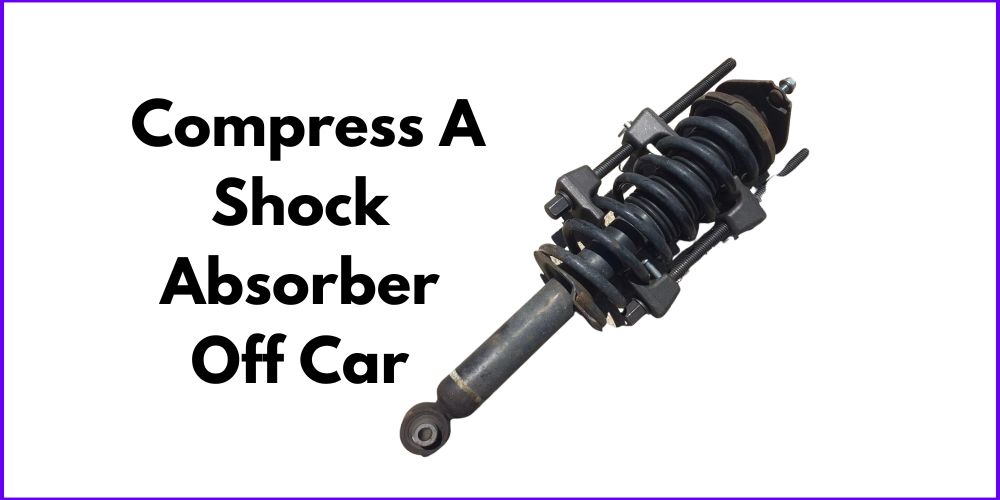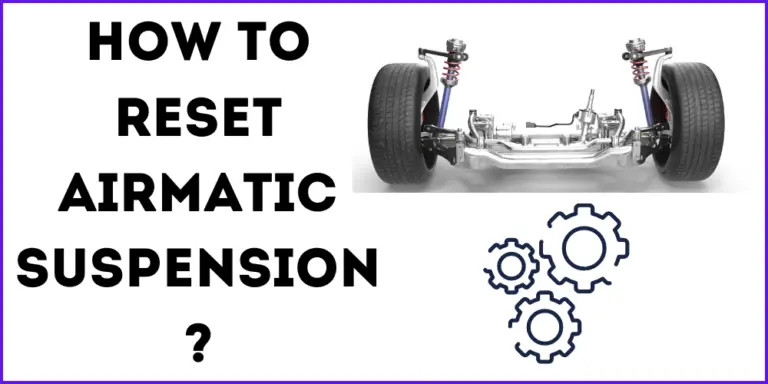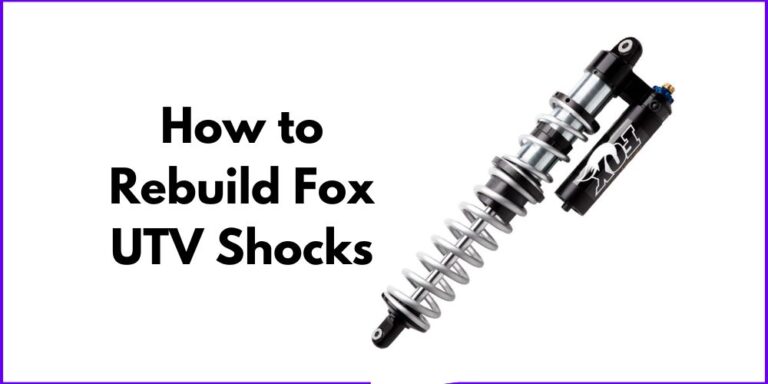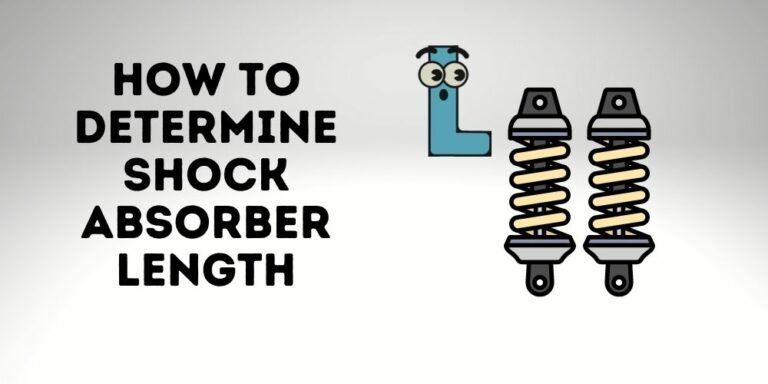Shock absorbers play a crucial role in a vehicle’s suspension system, providing a smooth and comfortable ride by absorbing and dampening the impact of bumps and vibrations on the road. Over time, these shock absorbers may wear out and require replacement.
In order to replace them, it is often necessary to compress the shock absorber off the car. In this article, we will explore the process of compressing a shock absorber off a car, providing you with a step-by-step guide and essential tips to make the task easier and safer.

5 Reasons to compress A Shock Absorber Off Car
The need for compressing a shock absorber off a car arises due to several reasons:
- Access for Removal: Shock absorbers are often secured to the vehicle using coil springs. These springs are under tension, making it difficult to remove the shock absorber without compressing the spring. Compressing the spring allows for easier access to the shock absorber for removal.
- Safety Precaution: Compressing the shock absorber off the car is crucial for safety reasons. The compressed spring stores potential energy; without proper compression, it can release suddenly and cause injury. Compressing the spring reduces the tension and minimizes the risk of accidents during removal.
- Proper Installation: When installing a new shock absorber, the coil spring needs to be properly seated and aligned. Compressing the spring off the car allows for easier alignment and positioning of the shock absorber during installation, ensuring a secure fit and proper functioning.
- Preventing Damage: Removing a shock absorber without compressing the spring can put stress on the suspension components, including the shock absorber itself. The excessive tension in the spring can cause the shock absorber to spring out forcefully, potentially damaging surrounding parts or causing injuries.
- Efficiency and Accuracy: Compressing the shock absorber off the car provides better control and precision during the replacement process. It allows for a smoother removal and installation, reducing the risk of errors and ensuring that the new shock absorber fits correctly in place.
Tools Required for Compressing a Shock Absorber Off Car
Before starting the compression process, gathering the necessary tools and equipment is important. Here are the tools you will need:
- Safety glasses and gloves
- Jack stands
- Hydraulic floor jack
- Socket set
- Wrench set
- Spring compressor tool
Ensure that you have these tools readily available before proceeding with the compression process.
Step-by-Step Guide to Compressing a Shock Absorber Off Car
Now, let’s walk through the step-by-step process of compressing a shock absorber off a car. It’s important to follow these instructions carefully to ensure your safety and the proper removal of the shock absorber:
- Ensure Safety Precautions: Before beginning any work, ensure that your vehicle is parked on a level surface and engage the parking brake. Wear your safety glasses and gloves to protect yourself from potential hazards.
- Remove the Shock Absorber: Using a hydraulic floor jack, lift the vehicle at the appropriate jacking points and secure it with jack stands. Locate the shock absorber you intend to replace and remove any connecting bolts or nuts.
- Secure the Shock Absorber: Once the shock absorber is disconnected, place it securely in a vise or similar holding device. This will provide stability and prevent any unexpected movement during the compression process.
- Use a Spring Compressor: Position the spring compressor tool on the coil spring, ensuring that it is properly aligned and securely attached. The spring compressor will help reduce the tension in the spring, allowing for safe removal and installation.
- Compress the Shock Absorber: Slowly tighten the spring compressor, gradually compressing the coil spring. Take care to ensure that the compression is even on both sides of the spring. Once the spring is sufficiently compressed, remove the retaining nut on the shock absorber and separate it from the spring.
4 Easy Tips for Compressing a Shock Absorber Off Car
Here are some essential tips to keep in mind while compressing a shock absorber off a car:
- Use Proper Safety Gear: Always wear safety glasses and gloves to protect yourself from potential hazards. Working with compressed springs can be dangerous, so taking proper safety precautions is crucial.
- Follow the Manufacturer’s Instructions: Refer to the manufacturer’s instructions for both the vehicle and the spring compressor tool. Following the recommended guidelines will ensure a safe and successful compression process.
- Take Precautions for Coil Springs: Coil springs store significant energy, and mishandling them can lead to serious injury. Always be cautious and ensure that the spring compressor is securely attached and properly aligned.
- Seek Professional Help if Unsure: If you are unsure about any step of the compression process or lack the necessary tools and experience, it is advisable to seek professional assistance. Professional mechanics have the expertise and equipment to perform this task safely.
6 Potential Reasons why your Shock Absorber Is hard to Compress
There are a few reasons why a shock absorber may be hard to compress:
- Internal Damage: If the internal components of the shock absorber, such as the piston or valves, are damaged or worn out, it can result in increased resistance and make the shock absorber harder to compress.
- Hydraulic Fluid Issues: The hydraulic fluid inside the shock absorber plays a crucial role in its operation. If the fluid is contaminated or deteriorated, it can lead to increased friction and resistance, making the shock absorber harder to compress.
- The build-up of Dirt or Debris: Accumulation of dirt, debris, or rust on the shock absorber’s exterior or piston rod can impede its movement and make it harder to compress.
- Incorrect Installation: Improper installation of the shock absorber, such as incorrect alignment or securing, can create friction and resistance, making it harder to compress.
FAQs on Compress A Shock Absorber Off Car
1. Should shocks be hard to compress?
Shock absorbers, also known as dampers, should not be hard to compress under normal circumstances.
The purpose of a shock absorber is to dampen the vibrations and impacts from the road, providing a smooth and comfortable ride. If a shock absorber feels excessively hard to compress, it may indicate a problem with the shock absorber itself.
2. How tight should the top shock absorber nut be?
The top shock absorber nut should be tightened to the manufacturer’s specified torque setting. Following the recommended torque provided by the vehicle manufacturer or the shock absorber manufacturer is important to ensure proper installation and performance.
Final Words
Compressing a shock absorber off a car is a task that requires caution, attention to detail, and the right tools. Following the step-by-step guide in this article and adhering to safety precautions, you can successfully replace your shock absorbers and maintain a safe and comfortable ride. If you are unsure or uncomfortable with the process, it is always best to consult a professional mechanic to ensure the job is done correctly.







